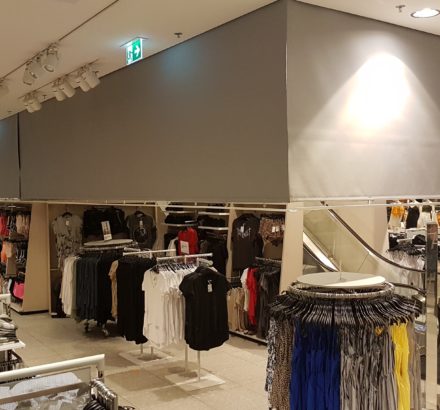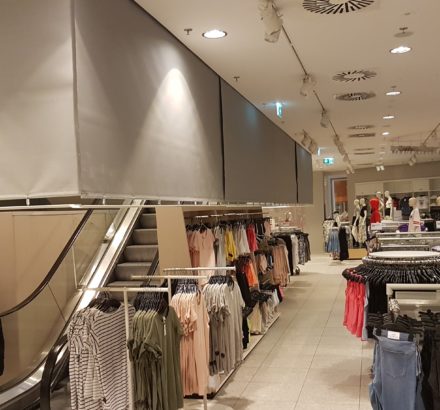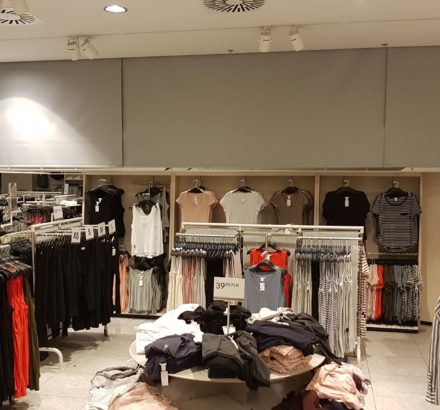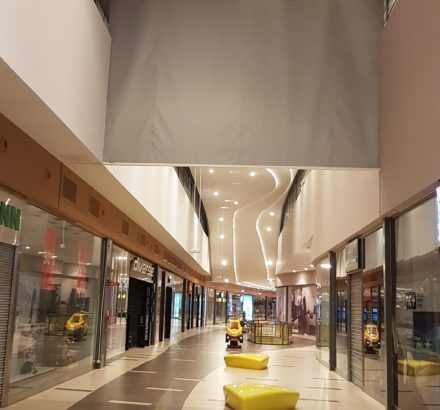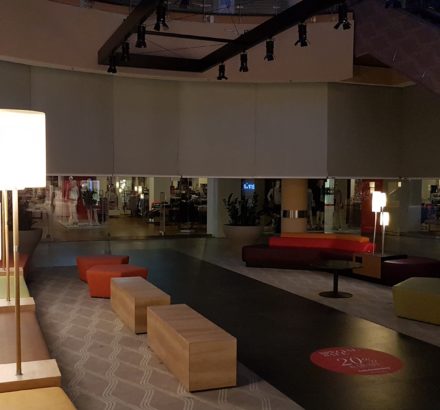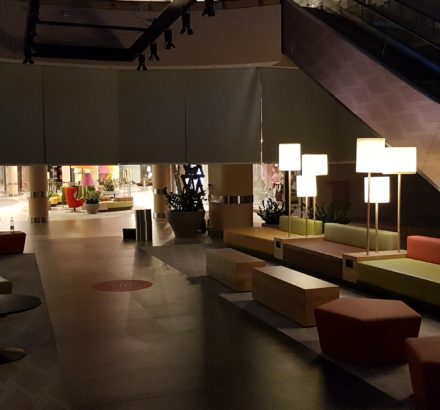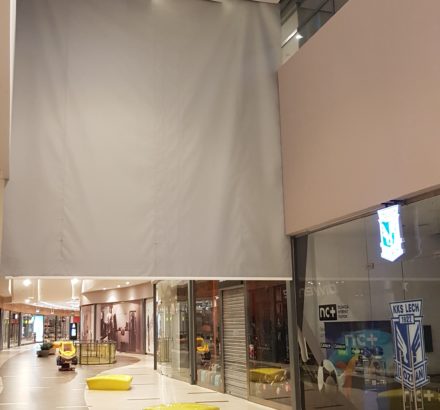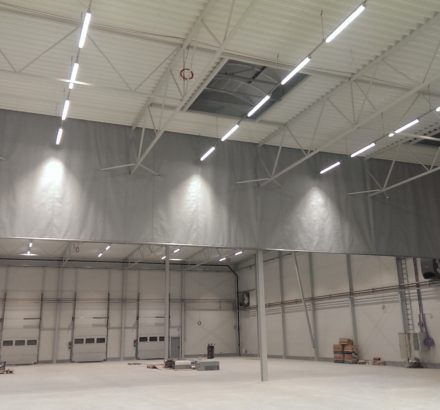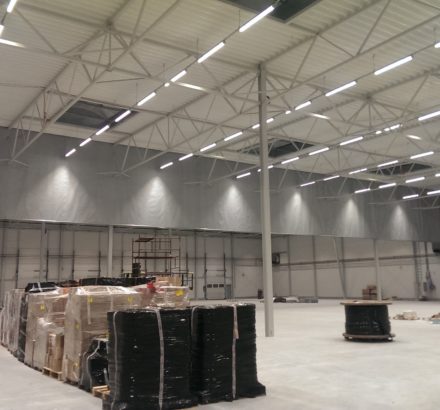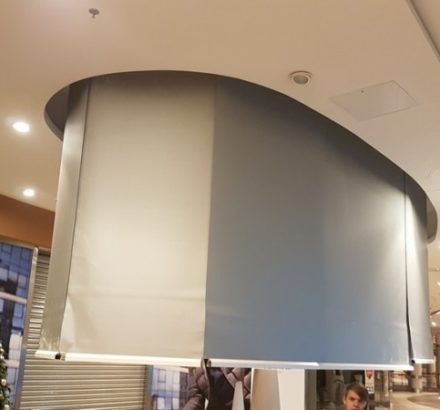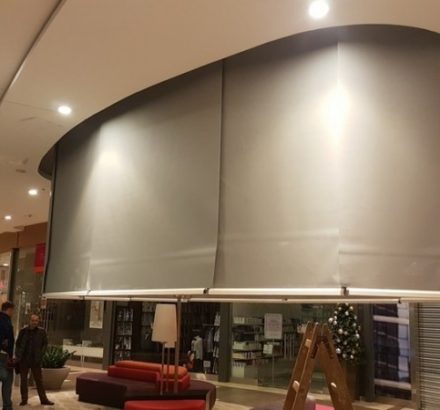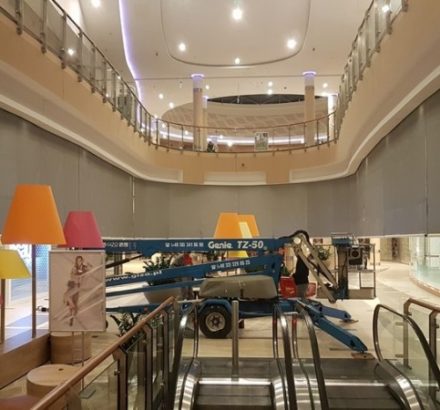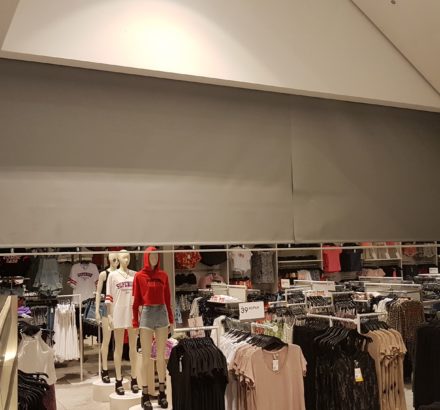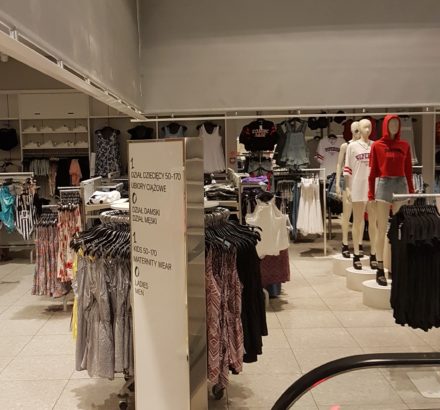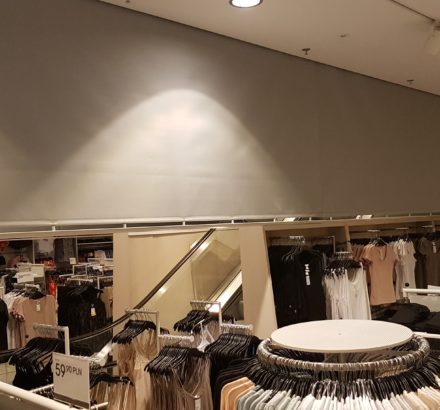Fixed and rolling smoke curtains class D 120 and DH 120
Ultra-light curtains with a weight of 0.5 kg/m2 in D 120 and DH 120 version. Grey color, close to RAL 7024. Opened by electric drive, closed by gravity or electric drive on a guaranteed voltage.
| CE certificate: | ASB DH 120: 1396-CPR-0125 NSC&NSCA D 120: 1488-CPR-0112/W |
| Construction type: | Permanent – NSC (SSB), Rolling – NSCA (ASB1, ASB2, ASB3, ASB4) |
| Class resistance: | D 120 / DH 120 |
| Weight: | approx. 0.5 kg/m2 |
| Maximum dimensions: | no limitations |


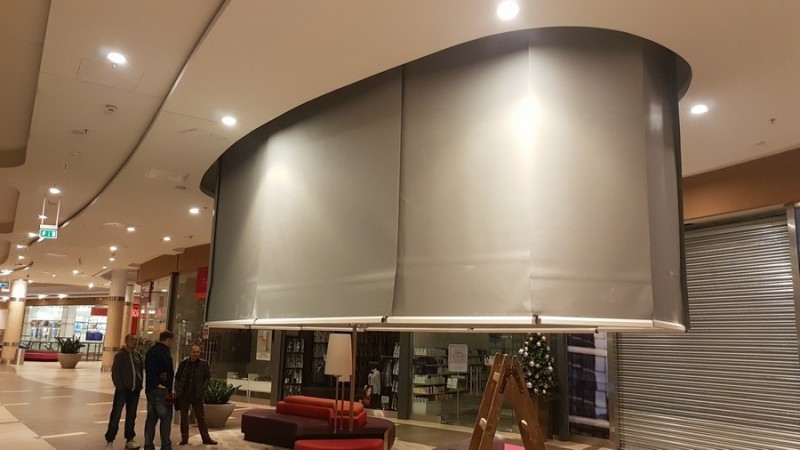
- According to EN 12101-1, the smoke curtain is a partition that limits the movement of the hot fire gases mixed with smoke and regulates the movement of smoke and fire gases within the building. Thus, it is used to create smoke reservoirs by restricting the spread of smoke and collecting it in a specific area, it can be used to separate smoke reservoirs, direct smoke into a specific area, channel its flow and prevent and delay the flow of smoke into other areas or air voids (a curtain can be used to separate, for example, the space of a corridor, a shop premises, escalator, staircase or crane shaft or as a sealing screen at the boundaries of air voids).
- The curtain made of special flexible fiberglass fabric.
- Types of smoke curtains:
- SSB fixed smoke curtain NSC installed in a static way,
- ASB1 (rolling NSCA(B) curtains that do not require an additional energy source to pass through or remain in the unfolded position; falling by gravity in the event of an alarm, trigger signal, or electrical failure, e.g. due to fire, in a controlled manner to the fire operating position – but not less than 2.5 m above finished floor level, without endangering users in any position,
- ASB2 (rolling NSCA(M) curtains that require a usable energy source to pass through or remain in the unfolded position – in this case an external supply is ensured by a 230 V AC guaranteed supply line – a guaranteed supply is provided by the Client or, optionally – a 24V DC power supply unit; falling in the event of an alarm, trigger signal, or electrical failure, e.g. due to fire, in a controlled manner to the fire operating position – but not less than 2.5 m above finished floor level, without endangering users in any position,
- ASB3 (rolling NSCA(B) curtains that do not require an additional energy source to pass through or remain in the unfolded position, however falling in the event of an alarm in a controlled manner to the fire operating position – without any restrictions on the extension height / final level of the curtain’s bottom edge),
- ASB4 (rolling NSCA(M) curtains that do require an energy source to pass through or remain in the unfolded position, however falling in the event of an alarm in a controlled manner to the fire operating position – without any restrictions on the extension height / final level of the curtain’s bottom edge).
- The curtain may be made of repeatable elements/modules, in which case the individual elements are combined with a suitable overlap to ensure adequate tightness, the residual gaps do not exceed 0.8 – 1% of the total surface to be covered.



